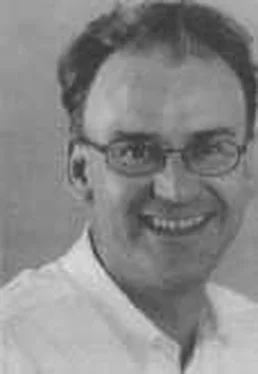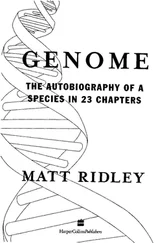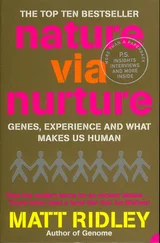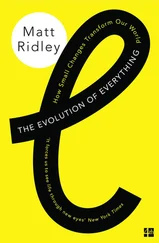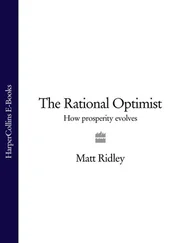The Queen - Matt Ridley
Здесь есть возможность читать онлайн «The Queen - Matt Ridley» весь текст электронной книги совершенно бесплатно (целиком полную версию без сокращений). В некоторых случаях можно слушать аудио, скачать через торрент в формате fb2 и присутствует краткое содержание. Жанр: Старинная литература, на английском языке. Описание произведения, (предисловие) а так же отзывы посетителей доступны на портале библиотеки ЛибКат.
- Название:Matt Ridley
- Автор:
- Жанр:
- Год:неизвестен
- ISBN:нет данных
- Рейтинг книги:4 / 5. Голосов: 1
-
Избранное:Добавить в избранное
- Отзывы:
-
Ваша оценка:
- 80
- 1
- 2
- 3
- 4
- 5
Matt Ridley: краткое содержание, описание и аннотация
Предлагаем к чтению аннотацию, описание, краткое содержание или предисловие (зависит от того, что написал сам автор книги «Matt Ridley»). Если вы не нашли необходимую информацию о книге — напишите в комментариях, мы постараемся отыскать её.
Matt Ridley — читать онлайн бесплатно полную книгу (весь текст) целиком
Ниже представлен текст книги, разбитый по страницам. Система сохранения места последней прочитанной страницы, позволяет с удобством читать онлайн бесплатно книгу «Matt Ridley», без необходимости каждый раз заново искать на чём Вы остановились. Поставьте закладку, и сможете в любой момент перейти на страницу, на которой закончили чтение.
Интервал:
Закладка:
The reason men find young women more sexually attractive than old women must be that their culture teaches them subtly to favor youth, not because their ancestors left more descendants if they had an innate preference for youth:'
Anthropology 's turn was next. With the publication of Margaret Mead 's Coming of Age in Samoa in 1928, the discipline was transformed. Mead asserted that sexual and cultural variety was effectively infinite and was therefore the product of nurture: She did little to prove nurture's predominance—indeed, what empirical evidence Mead did adduce was largely, it now seems, wishful thinking'—but she shifted the burden of proof: Mainstream anthropology remains to this day committed to the view that there is only a blank human nature.'
Psychology 's conversion was more gradual. Freud believed in universal human mental attributes—such as the Oedipal complex: But his followers became obsessed with trying to explain everything according to individual early childhood influences, and Freudianism came to mean blaming one ' s early nurture for one 's nature: Soon psychologists came to believe that even the mind of an adult was a general-purpose learning device. This approach THE INTELLECTUAL CHESS GAME
::: 319 :::
reached its apogee in the behaviorism of B. F. Skinner. He argued that brains are simply devices for associating any cause with any effect.
By the 1950s, looking back at what Nazism had done in the name of nature, few biologists felt inclined to challenge what their human-science colleagues asserted: Yet uncomfortable facts were already appearing. Anthropologists had failed to find the diversity Mead had promised. Freudians had explained very little and altered even less by their appeals to early influences. Behaviorism could not account for the innate preferences of different species of animal to learn different things: Rats are better at running mazes than pigeons. Sociology 's inability to explain or rectify the causes of delinquency was an embarrassment. In the 1970s a few brave
" sociobiologists " began to ask why, if other animals had evolved natures, humans would be exempt. They were vilified by the social science establishment and told to go back to ant-watching: Yet the question they had asked has not gone away.'°
The principal reason for the hostility, to sociobiology was that it seemed to justify prejudice. Yet this was simply a confusion.
Genetic theories of racism, or classism or any kind of ism, have nothing in common with the notion that there is a universal, instinctive human nature. Indeed, they are fundamentally opposed because one believes in universals and the other in racial or class particulars.
Genetic differences have been assumed just because genes are involved. Why should that be the case? Is it not possible that the genes of two individuals are identical? The logos painted on the tails of two Boeing 747s depend on the airlines that own them, but the tails beneath are essentially the same: They were made in the same factory of the same metal: You do not assume because they are owned by different airlines that they were made in different factories. Why, then, must we assume because there are differences between the speech of the French and the English that they must have brains that are not influenced by genes at all? Their brains are the products of genes—not different genes, the same genes. There is a universal human language-acquisition device, just as there is a universal human kidney and a universal 747 tail structure.
Think, too, of the totalitarian implications of pure environ-
::: 320 :::
The Red Queen
mentalism: Stephen Jay Gould once caricatured the views of genetic determinists in this way: " If we are programmed to be what we are, then these traits are ineluctable: We may, at best, channel them, but we cannot change them:' He meant genetically programmed, but the same logic applies with even more force to environmental programming. Some years later Gould wrote: "Cultural determinism can be just as cruel in attributing severe congenital diseases—
autism, for example—to psychobabble about too much parental love, or too little:'
If, indeed, we are the product of our nurture (and who can deny that many childhood influences are ineluctable—witness accent?), then we have been programmed by our various upbring-ings to be what we are and we cannot change it—rich man, poor man, beggar-man, thief. Environmental determinism of the sort most sociologists espouse is as cruel and horrific a creed as the biological determinism they attack. The truth is, fortunately, that we are an inextricable and flexible mixture of the two: To the extent that we are the product of the genes, they are all and always will be genes that develop and are calibrated by experience, as the eye learns to find edges or the mind learns its vocabulary. To the extent that we are products of the environment, it is an environment that our designed brains choose to learn from. We do not respond to the " royal jelly " that worker bees feed to certain grubs to turn them into queens: Nor does a bee learn that a mother 's smile is a cause for happiness.
THE MENTAL PROGRAM
When, in the 1980s, artificial intelligence researchers joined the ranks of those searching for the mechanism of mind, they, too, began with behaviorist assumptions: that the human brain, like a computer, was an association device. They quickly discovered that a computer was only as good as its programs. You would not dream of trying to use a computer as a word processor unless you had a word-processing program. In the same way, to make a computer THE INTELLECTUAL CHESS GAME
:::321 :::
capable of object recognition or motion perception or medical diagnosis or chess, you had to program it with " knowledge: " Even the " neural network " enthusiasts of the late 1980s quickly admitted that their claim to have found a general learning-by-association device was false: Neural networks depend crucially on being told what answer to reach or what pattern to find, or on being designed for a particular task, or on being given straightforward examples to learn from: The "connectionists, " who placed such high hopes in neural networks, had stumbled straight into the traps that had caught the behaviorists a generation earlier: Untrained connection-4st networks proved incapable even of learning the past tense in English."
The alternative to connectionism, and to behaviorism before it, was the "cognitive" approach, which set out to discover the mind's internal mechanisms. This first flowered with Noam Chomsky 's assertions in Syntactic Structures, a book published in 1957, that general-purpose association-learning devices simply could not solve the problem of inferring the rules of grammar from speech:" It needed a mechanism equipped with knowledge about what to look for: Linguists gradually came to accept Chomsky 's argument: Those studying human vision, meanwhile, found it fruit-ful to pursue the "computational " approach advocated by David Marr, a young British scientist at MIT: Marr and Tomaso Poggio systematically laid bare the mathematical tricks that the brain was using to recognize solid objects in the image formed in the eye. For example, the retina of the eye is wired in such a way as to be especially sensitive to edges between contrasting dark and light parts of an image; optical illusions prove that people use such edges to delineate the boundaries of objects: These and other mechanisms in the brain are "innate " and highly specific to their task, but they are probably perfected by exposure to examples: No general-purpose induction here:"
Almost every scientist who studies language or perception now admits that the brain is equipped with mechanisms, which it did not "learn" from the culture but developed with exposure to the world; these mechanisms specialize in interpreting the signals
Читать дальшеИнтервал:
Закладка:
Похожие книги на «Matt Ridley»
Представляем Вашему вниманию похожие книги на «Matt Ridley» списком для выбора. Мы отобрали схожую по названию и смыслу литературу в надежде предоставить читателям больше вариантов отыскать новые, интересные, ещё непрочитанные произведения.
Обсуждение, отзывы о книге «Matt Ridley» и просто собственные мнения читателей. Оставьте ваши комментарии, напишите, что Вы думаете о произведении, его смысле или главных героях. Укажите что конкретно понравилось, а что нет, и почему Вы так считаете.
